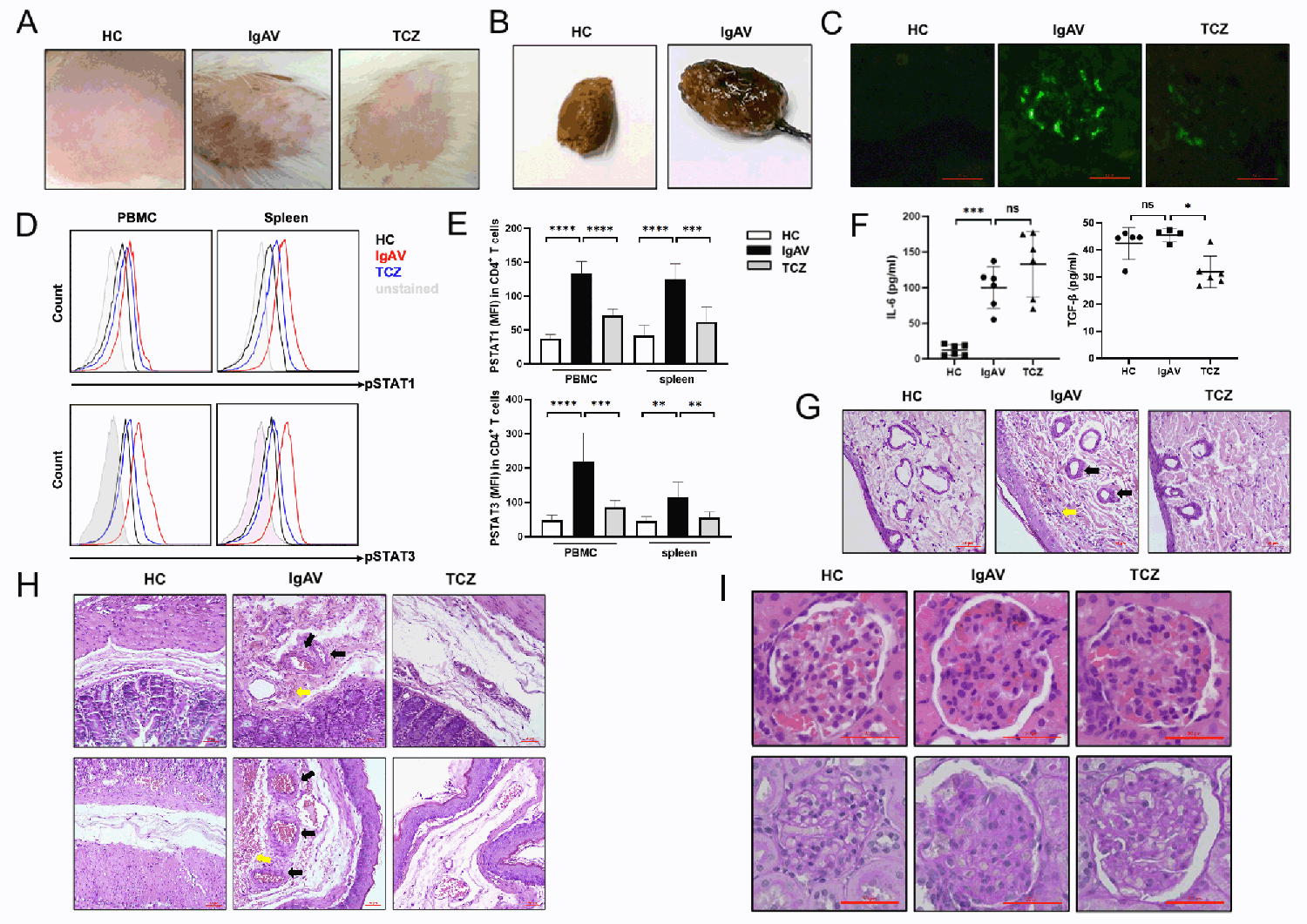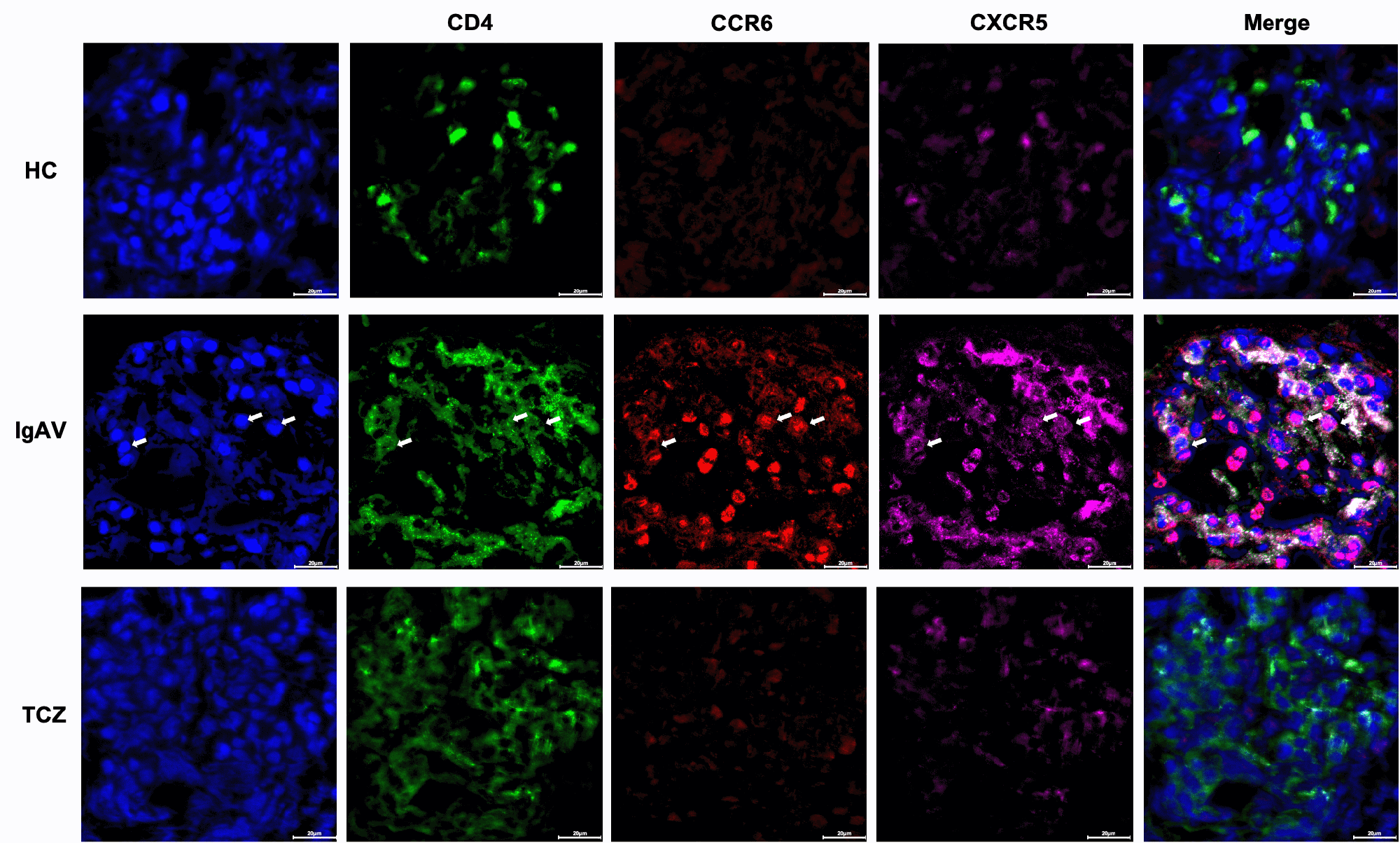Session Information
Date: Monday, November 13, 2023
Title: (1221–1255) Pediatric Rheumatology – Clinical Poster II: Connective Tissue Disease
Session Type: Poster Session B
Session Time: 9:00AM-11:00AM
Background/Purpose: Immunoglobulin A vasculitis (IgAV), also named Henoch–Schönlein purpura, is a systemic vasculitis characterized by the deposition of IgA1-dominant immune complexes in small vessels that often involves the skin, joints, gastrointestinal tract, and kidney. Research indicated increased frequencies of circulating activated B cells and plasmablasts in IgAV, which may serve as the source of
the rising IgA levels. T follicular helper (Tfh) 17 cells are considered to support B cells to switch to high-affinity IgA production. Previous study has confirmed that Tfh17 cells increase in the peripheral blood of IgAV patients. To evaluate the pathological role and the contribution in local tissue damage of Tfh17 cells in IgAV, we investigated the mechanism responsible for the differentiation of Tfh17 and the production of IgA in IgAV patients and IgAV rats respectively, and explored how to ameliorate IgAV by modulating Tfh17 generation.
Methods: Renal biopsy samples and peripheral blood mononuclear cells from IgAV patients were analyzed respectively by immunofluorescence staining and flow cytometry. In vitro culture was performed to assess the modulation of cytokine-induced phenotypes. IgAV rat model was established by intragastric administration of mixed solution, intraperitoneal injection of ovalbumin and Freund’s adjuvant. IgAV rats were used to explore the therapeutic effects of regulating Tfh17 cells. Serum cytokine and IgA levels were measured by ELISA while histopathological changes were evaluated by H&E and PAS staining. Flow cytometry and immunofluorescence staining were used to detect T cell and GC B cell phenotypes and homing characteristics in circulation and tissues of IgAV rats.
Results: Frequency of CD4+CXCR5+CCR6+Tfh17 cells were increased in the circulation and organization of IgAV patients and associated with disease severity. The increased expressions of CD103, CCR6, CCR9 lead to the homing and residence characteristics of Tfh17 cells, resulting in local inflammatory response. Suppression of Tfh17 cells reduced the production of IgA and greatly ameliorated clinical symptoms and decreased IgA deposition and mesangial proliferation in the kidney in IgAV rats.
Conclusion: Our findings suggest that suppression of Tfh17 differentiation can alleviate IgA-mediated vasculitis and inflammatory tissue damage, which may permit the development of tailored medicines for treating IgAV.
immunofluorescence staining of human renal tissue for CD4, CCR6 and CXCR5 with composite multiplexed images (scale bar: 20 lm). Arrowheads
indicate representative CD4+CCR6+ CXCR5+ Tfh17 cells.
To cite this abstract in AMA style:
Ma X, Jiang Q, Chi X. Local Inflammatory Response Mediated by the Homing of Tfh17 Cells Is Involved in Tissue Injury of Immunoglobulin a Vasculitis [abstract]. Arthritis Rheumatol. 2023; 75 (suppl 9). https://acrabstracts.org/abstract/local-inflammatory-response-mediated-by-the-homing-of-tfh17-cells-is-involved-in-tissue-injury-of-immunoglobulin-a-vasculitis/. Accessed .« Back to ACR Convergence 2023
ACR Meeting Abstracts - https://acrabstracts.org/abstract/local-inflammatory-response-mediated-by-the-homing-of-tfh17-cells-is-involved-in-tissue-injury-of-immunoglobulin-a-vasculitis/



